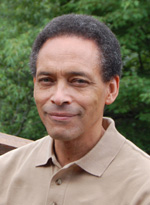
James Q. Wilson was, above all else, a diligent and insightful student of organizations.
The fearsomely productive Jim Wilson book-ended the 1980s with two hugely influential book-length contributions, an edited volume on The Politics of Regulation (1980) and his opus on Bureaucracy: What Government Agencies Do and Why They Do It (1989). He even managed to knock out a smash-hit textbook. (As my grad-school colleague and fellow Wilson student Donald Jensen once remarked: “Amazing! On top of everything else the guy pulls off a Samuelson!”) Regrettably, but perhaps predictably, these and other works were overlooked by most obituary writers attentive to Jim’s public impact. Indeed, one might have thought that Jim’s entire professional oeuvre culminated in “Broken Windows”, the co-authored 1982 Atlantic Monthly piece arguing for rapid official response to the very earliest indicators of neighborhood disorder. This almost-dental approach to policing struck a chord and exemplifies well Jim’s appreciation of the practical, site-level aspect of public policy. Yet his forays into crime-control, voluminous and vastly influential in the public discourse, always remained for me, as I suspect for many of his 1970s-era students, something of a diversion. Perhaps my perspective was long-ago warped by having twice sat through his legendary Bureaucracy course, or by having survived (barely) his graduate seminar, but I persist in seeing Jim as, above all else, a diligent and insightful student of organizations, including all their many flavors, layers, and the multiplicity of influences affecting them.
Jim’s obituary in The Economist also offered up “broken windows” but managed, better than most, to capture his incisively inductive bent: “The approach he took was empirical and practical. Grand, simple theories never fitted neatly. . . Instead he looked at human behavior on the ground, talked to people, and built up details.” His first book, Negro Politics: The Search for Leadership (1960), emerged from endless hours of painstaking interviewing and note-taking – enough to fill two ring binders with meticulously rendered single-spaced type – with nearly 100 black civic and political leaders in Chicago, an approach he passed along to his students, few of whom could match him. In this very first major research effort we also encounter, for the first of many times, a central theme of his teaching and writing: the sometimes considerable difference in perspective, preference, and behavior between the top of an organized endeavor and its bottom. What soldiers, police officers, regulatory inspectors and party activists believe and do may exist in considerable tension with the beliefs, behaviors and calculations of those ostensibly in charge of them. Moreover, the key organizational challenge remains the definition and pursuit of the possible by means consistent with an array of internal and external expectations and constraints. As an organization grows, and acquires a larger audience for its activities, constraints multiply. With contextual specifics resistant to prescriptive generalizations by their sheer variety, Jim remained ever-modest on this score. He could help you ask the right questions and make you aware of the need, as he often said, to see “the big picture” and avoid tunnel vision. His method, such as it was, offered no magic if you were interested in transforming the world. But Jim could help make you wise, which is all a good teacher can ever do.
One striking, and frankly dangerous, aspect of Jim’s career was the extent to which he could synthesize extracted insight from the work of others. His stature as a student of crime emerged from public-interested commentary (literally, in the now-defunct The Public Interest and in Commentary) drawing on his vast reading in the subject. He “made his bones” in political science with dogged fieldwork in the 1950s and 1960s but his crime identity was mainly as a public intellectual, challenging accepted wisdom but not gathering original data or rigorously testing hypotheses. “Broken Windows” for all of its influence, was, he later said, something of a “speculation.”
I say that his approach was dangerous not because bad policies might result – though some have long criticized Jim’s writing as having contributed to our current over-incarceration woes – but for much more restricted personal and professional reasons. Jim could read and watch carefully, think clearly about whatever he had read or seen, and draw illuminating conclusions rendered elegantly accessible to a general audience. He did so, for example, in Political Organizations (1973), a classic on voluntary associations (without a shred of original field research) that nevertheless went out-of-print until Princeton University Press rescued it with a long-overdue paperback edition in 1995. What Jim did not do after the first decade of his career, however, was focus much, if at all, on peer-reviewed journal publication. Like other leading lights of the Harvard Government Department of the 1970s, Jim painted on a broader canvas, and in doing so tacitly encouraged his students to emulate him, a potentially career-ending mistake for younger scholars attempting to swim in his considerable wake.
I survived (again, barely). But I have no regrets about having been his student, or being (probably) the only Afro-American to complete a doctorate under his supervision. I got where I always longed to be, and would never have done so absent his influence.
This essay is part of the Penn Program on Regulation’s online symposium, Remembering James Q. Wilson.




